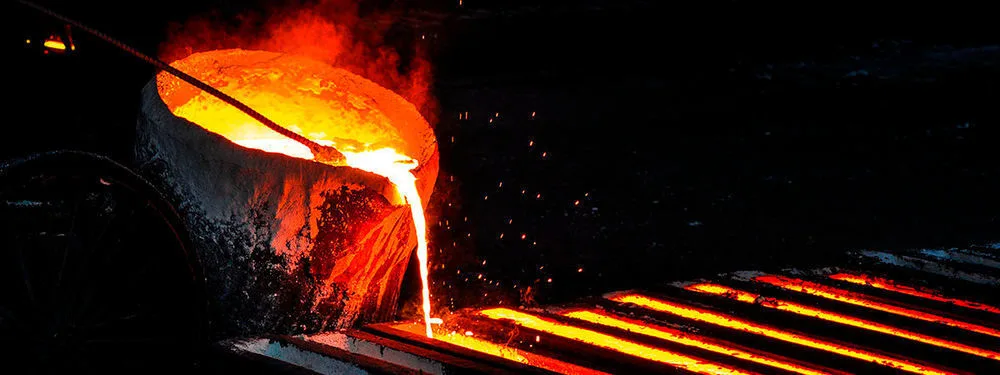Introduction
The machining industry uses a variety of heat treatment options for metals and other materials to make them more practical and viable for use. Annealing is one such heat treatment process. What makes annealing unique over other heat treatment processes is that after heating the metals it offers them to cool down for some time.
Although it was discovered in ancient times yet in the current time it is more important than ever. Manufacturers and machinists try to take maximum advantage of the annealing process by exploiting the advantages.
This blog explains the annealing process in detail with its types, advantages and disadvantages.

What is Annealing Process?
In simple words annealing is just a heating process. The basic purpose of annealing is to restore the physical and chemical properties of the metal in such a way that the metal becomes more workable. Annealing requires heating of the metal to a temperature that is less than the melting point and more than the recrystallization temperature.
An important point about annealing process is that it does not just involve heating the metal to a specific temperature. It also includes cooling down the metal after heating. Once the metal wires cooled down the metal became more ductile. Annealing causes a release in the metal’s internal stress and removes any internal structural deformations if present.
Annealing has a strong historical background as well. According to research it was discovered in the Middle Ages. The term annealing has its origin in the word “anelen” which means to set on fire or to bake. Annealing was discovered by ancient craftsmen in the 12th century. They discovered that when metals such as iron and steel are heated to a particular temperature and cooled down there’s a change in their physical properties.
When is Annealing Required and Why is it Important?
There is always some purpose behind any process. Same is the case with annealing. Sometimes metals are so hard that it is near to impossible to work on them. Excessive exertion of force or work on such metals can result in cracking.
Therefore, annealing is performed to reduce their hardness and make them able to be worked upon. Since annealing reduces hardness of metals it is commonly annealed is used in work hardening processes such as:
- Drawing
- Cold forming
- Bending
Annealing makes the metals more ductile. Therefore, it is easy to work on metal wire with them.
Shaping Hot Steel:
A prominent example of annealing is steel shaping. Since steel is a very hard metal it is impossible to shape it in raw form. Therefore, it is shaped after annealing. It is first heated and then cooled down before giving it the desired shape. Not just steel, other metals such as brass, aluminum and copper can also be shaped through annealing.
Metal Fabrication and Conductivity:
Certain processes such as metal fabrication use annealing process for the creation of complex parts. Annealing makes the metals more workable by making their physical properties back to their pre-work state.
Another purpose of annealing of metals is to increase the electrical conductivity of metals.
It is worth mentioning here that annealing reduces corrosion resistance and the risk of cracking of metals as a result of work hardening.
How does Annealing Work?
- Reverse Work Hardening
Once heating during the process annealing causes the hardening of the metal to reverse. Although the metal becomes hard again, this time it is more ductile and less hard than before. It is because of annealing. In other words, we can say that annealing “resets” the material properties of a metal.
Annealing allows the atoms inside the metal to migrate. This migration or relocation causes the rectifications of any dislocations and deformed grains. Basically, these deformed grains and dislocations are the reason behind the intense hardness of the metal that makes them too hard to be worked upon.
- Reduce Weld Solidification
This feature is more practical in case of welds. Metals such as steel when welded have a “heat affected zone” or HAZ on both sides of the two welded components. The temperature in the heat affected zone is so high that it causes some of the components to melt and get deposited or precipitated on the surface. This is common in case of alloys mostly.
Precipitation of such components make the steel more vulnerable to corrosion. It also makes the steel more brittle.
Therefore, annealing in this case reduces the brittleness of the steel by decreasing the solidification of certain materials in the heat affected zone. In case of steel this material is mostly carbide. It causes a restoration of the original mechanical properties of the metal.
- Enhance Electrical Conductivity
We have mentioned before that annealing enhances the electrical conductivity of the metals. But how?
Annealing restores the original crystal lattice of the metal. It also causes the reduction in the dislocations of atoms inside the metals. This increases the electrical conductivity of metals.
Not just the electrical conductivity but annealing also increases the magnetic properties of the metals. Metals after undergoing annealing become better conductors of electricity and form better magnetic fields.
- Remove Residual Stresses
Residual stresses are those internal stresses that remain in an object even in the absence of any external force or stress. These stresses are mostly present inside welded objects such as steel.
Annealing therefore causes a reduction in the metal’s residual stress. The reason is the same i.e. the removal of dislocations of metal atoms inside the metal’s structure. This causes a reduction in the probability of metal’s structural deformations.

The Stages of Annealing in an Annealing Furnace
From the heading you might have got the idea that annealing is performed in an annealing furnace. Of Course, it’s a heating process so it has to be carried in a furnace. It is because only a furnace has the capability of maintaining and tolerating so much heat.
Metals in the annealing furnace are heated to a particular temperature. After heating the temperature is maintained for some time. After the heating process is over the metal recrystallizes again. The heating in the furnace causes relocation of the metallic atoms. The relocation of the metal’s atoms causes redistribution and eradication of dislocations inside the metal.
The working of the annealing furnace is classified into three stages. Let’s understand each stage one by one in detail.
1. Recovery Stage
Of Course, in the first stage the metal is subjected to extremely high temperature in the form of heat. The increase in temperature provides the atoms in the metals the energy to move and migrate. These migrations result in the removal of dislocations.
As the dislocations get removed the residual stress inside the sheet metal gets released. Consequently, the metal becomes more ductile.
2. Recrystallization Stage
As mentioned before, annealing heats the metal above its recrystallization temperature. The recrystallization stage is the stage where it is performed. In this stage the metal is heated above its recrystallization temperature range. This stage causes a modification or re-organization of the original crystal structure of the metal. As a result, a new grain structure or crystal lattice is formed.
What’s good about this new crystal structure is that it is free from internal or residual stresses. It also causes the metal to restore its original properties that were in the pre-worked stage.
3. Grain Growth Stage
As the name implies this stage is about the growth and formation of new grains inside the metal’s structure. Not just the new grains are formed but they also grow in sizes. A major factor that impacts the growth and formation of these grains is the cooling temperature and the external atmosphere.
Annealing is not a short process. It is in fact a time-consuming process and can take days.
A major factor is of course the type of metal which is being subjected to annealing. A number of factors are determined by just the type of annealed metal. These include the recrystallization temperature, the melting point and the cooling time. The duration and time period of the annealing process is determined based on these factors.
Types of Annealing
In this section we shall have a detailed analysis about the various types of annealing process.
1.Stress Relief Annealing
Stress relief annealing requires very cold working slow cooling. This process is based on the belief that the strength of the material when heated is reduced when the temperature is high. The temperature range for stress relief annealing lies between 550-650 degree Celsius. Metals such as cast-iron parts and carbon steel go through stress relief annealing.
The distribution of heat is uniform and remains below the austenitic transformation range.
2.Isothermal Annealing
Isothermal annealing is different from full annealing. However, it does produce the same microstructure inside the metal. It includes heating the metal to a certain temperature which is usually above the upper critical temperature, once heated the metal is cooled slowly then quickly cooled to a temperature of 650 degree Celsius.
What makes it different from full annealing is the fact that after cooling down the metal is held isothermally for some period of time.
Isothermal annealing increases the machinability of metals.
3. Diffusion Annealing
Diffusion annealing process is used widely for steel, iron and glass beads. This process is known for increasing the machinability of steel and the ductility of mild steel. The temperature range in case of diffusion annealing is between 1000 -1300 degree Celsius.
Diffusion annealing compensates the changes in the chemical compositions of casting materials and steels without doing any changes in chemical composition of the microstructures.
4. Incomplete Annealing
This method is most commonly used for low content carbon steel. What makes it different from full annealing is that it softens the steel to a moderate level. The heating temperature is therefore kept below the critical transformation point. Incomplete annealing usually provides benefits of decreased hardness and better machinability.
5.Complete Annealing
The major difference between incomplete and complete annealing is the upper critical temperature. As opposed to incomplete annealing, in complete annealing the metal is heated above the upper critical temperature.
Later the cooling process is performed in a controlled manner. In order to achieve the desired microstructure of the metal, machinists should have ample knowledge about the metal’s isothermal transformation diagram and cooling transformation diagram.
6. Specification Annealing
Specification annealing as the name implies is used to make spheroid structures inside alloys. There are two purposes of specification annealing. The first purpose is of course to improve the machinability of alloys. The second purpose is to aid in cold forming.
Unlike other types of annealing spherical annealing heats the temperature below the lower critical temperature range. It is kept at that heating temperature for a number of hours. In this case the cooling rates are not very important.
7. Recrystallization Annealing
Recrystallization annealing heats the metal below the lower critical temperature range. It is maintained at this lower temperature and for a prolonged period of time before it is cooled. This annealing causes recrystallization inside the metal by forming new undeformed grains. These undeformed grains take over the deformed grains.
Which materials can be annealed?
Annealing can be applied to a variety of materials. These include of course metals. The following materials can be annealed:
- Manufactured components such as springs, washers etc. can be subjected to annealing. In case of these components annealing helps in reducing brittleness. Manufactured components are annealed frequently.
- Metal sheets are the most common materials that are annealed. After cold forming these metal sheets are converted into a variety of other materials through cutting, bending or even punching. Annealing helps in restoring the ductility of the metal sheet and removes the work hardening.
- Some other metals such as aluminum, copper and brass are also capable of going through an annealing process.
Advantages and Disadvantages of Annealing
Like all other machining processes annealing has its advantages and limitations. In this section we shall explore both.
Advantages of Annealing:
- Annealing enhances the ductility of metals.
- It increases the electrical conductivity of metals and enhances their magnetic properties.
- Annealing plays a great role in reducing the residual stress of metals.
- It enhances the machinability of metals.
- There is a decrease in the hardness of the materials after annealing which enhances their workability.
- It enhances the chemical and wear resistance of metals.
- Annealing helps in reducing the brittleness of metals.
Disadvantages:
1. Time Consuming
Annealing is a complex and time-consuming process. It requires a lot of expertise. Moreover, the time required for completion of the process depends upon the type of metal and the type of annealing process. It always takes more than twenty-four hours for completion.
2. Expensive:
Annealing adds to the overall cost of the project. It is because it requires a lot of labor and equipment for implementation. The energy requirement is also huge.
Can Annealing be Used with Alloys?
A simple answer to this question is yes.
Annealing can definitely be applied to alloys. It however depends upon the type of alloy being annealed. The heating time for alloys ranges from 0.5 hours to 3 hours. The heating time depends upon the type of alloy and the size of the workpiece as well. Of Course, the larger the size the more the heating time.
The cooling time for alloys is twenty degree Celsius per hour. This continues until the alloy reaches the temperature 290 degree Celsius. After this temperature the cooling time is no more important.
Conclusion:
In the machining industry where machinists and manufacturers have to deal with complex parts on a daily basis, annealing is the perfect heat treatment. It offers several benefits for the manufacturers. However, it is expensive and a time-consuming process that also requires a lot of expertise.
For some metals such as materials science as steel and iron this is the most suitable process to convert them into a workable condition. It makes the metals and materials more suitable for further machining operations.

